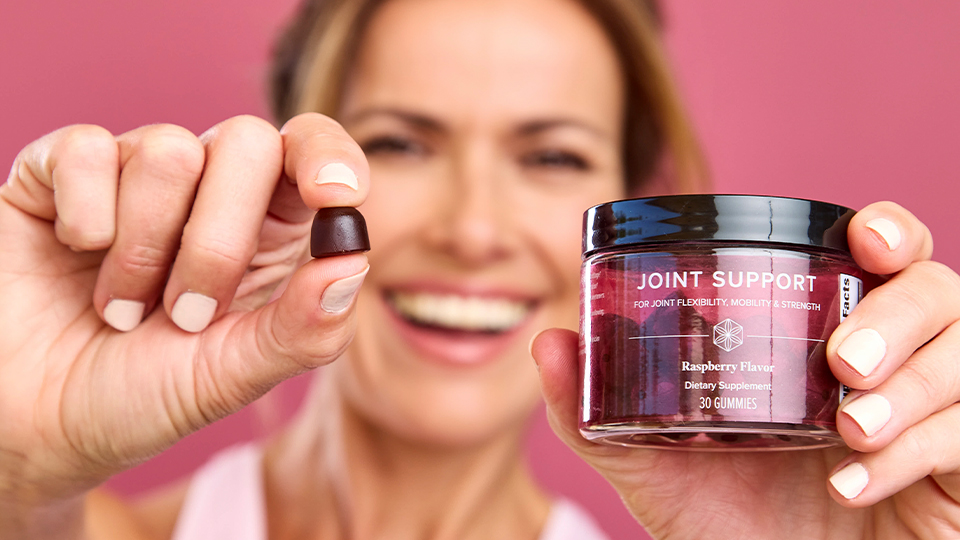By Michael Colgan, Ph.D.
Vitamin D has become very sparse in the U.S. food chain. So the only good sources of supply of this very ancient essential nutrient are the manufacture of vitamin D in the body by skin exposure to sunlight and vitamin D supplements. Canada and other high latitude countries have insufficient sunlight, and a very high incidence of vitamin D deficiency (1-6). So, supplementation is the only answer.
One other major cause of vitamin D deficiency is being overweight. Being fat soluble, vitamin D is taken up by adipose tissue, and thereby made unavailable for use by the body. If you are overweight you are very likely to be deficient in vitamin D (7). If you are an athlete and overweight, you are almost certain to be deficient.
Measured incidence of vitamin D deficiency in elite indoor athletes is up to 94 percent of basketball players and 83 percent of gymnasts. Low blood levels of vitamin D are common even in young outdoor athletes worldwide, including athletes in sunny Australia. Recent testing of the New York Giants during spring training showed that 81 percent were deficient in vitamin D (8-11).
When I reported that most of his young hockey players had tested deficient in vitamin D, one coach replied, “So what?” I don’t know how general such an ignorant view may be in sports, so I will quickly review the science to show you that, unless you get sufficient vitamin D, you will never achieve your athletic potential.
Research shows clearly that Vitamin D deficiency in athletes damages muscles, ligaments, tendons, and bones. Vitamin D deficiency reduces training quality, increases risk of injury, increases risk of stress fractures, and increases the frequency and duration of infections (12-14).
The official definition of normal vitamin D status is a blood level of 25-hydroxyvitamin D3, above 30ng/ml (1-3). But, optimal benefits for athletes occur at higher levels. Recent research shows the highest levels of performance occur with vitamin D levels of 40-50ng/ml. Peak neuromuscular power occurs with levels of 50ng/ml (3,15,16), with no additional benefits beyond 50ng/ml.
The evidence is clear that serum vitamin D levels of 40-50ng/ml is best for the health of athletes. These levels also increase muscle power, muscle protein synthesis, ATP levels, strength, jump height, jump velocity, jump power, and exercise capacity. Vitamin D supplementation also increases the size and number of Type II (fast twitch) muscle fibers. Athletes also require vitamin D levels above 40ng/mL for fracture prevention, including prevention of stress fractures (15-21).
You can get your vitamin D status diagnosed with a simple 25(OH)D3 blood test. If you are a member of a sports team, ask your coaches if they can get the team measured. Often a lot cheaper in bulk. Once you have your result, you can decide whether vitamin D supplementation could be a benefit. Of course, any decision you make has to be at your own choice and risk.
Here is how we do it at the Colgan Institute. I have to note that I report the latest science. But, supplementation with vitamin D should always be under the supervision of a health care professional, because there is wide variation in responses.
We use vitamin D3, in oil-filled gelcaps, the only form of the vitamin and the only delivery system we have found effective. It is inexpensive and far more effective than many of the bizarre mixtures of sundry chemicals we see called, “sports supplements”. We get athletes to take vitamin D with food. We have seen remarkable benefits for performance.
We usually see an athlete who is vitamin D deficient reach a steady state level between 40-50 ng/ml after about 90 days supplementation with 4,000 to 10,000 IU of vitamin D3 per day. Extended studies show that 10,000 IU per day is the tolerable upper level without reported toxicity (22,23,24). Whatever your initial status, your health professional should advise and monitor the dose.
In all cases, get re-tested after 3 months. Once levels are steady between 40-50 ng/dl, continued supplementation should follow the guidelines of the US National Academy of Science, a tolerable upper limit of 4,000 IU of vitamin D3 per day (25). When levels reach 40-50 ng/ml, there are no further benefits in exceeding 4,000 IU of vitamin D3 per day. Get your vitamin D right and let the sun shine in on your performance.
Dr. Michael Colgan, a world-renowned research scientist and leading expert in the inhibition of aging, recently joined the Isagenix Scientific Advisory Board. Dr. Colgan has served as a consultant to the U.S. National Institute on Aging and is widely recognized for several best-selling books on health and nutrition, including Your Personal Vitamin Profile, (New York: William Morrow, 1982), a definitive guide for accurate, scientifically researched nutritional information that has been in continuous print for the last 28 years. He is also the author of numerous research papers in a wide range of journals including Science, The Journal of Experimental Psychology, New Zealand Medical Journal, The Olympic Scientific Congress, and Nutrition and Health. As director at his eponymous Colgan Institute, a consulting, educational and research facility concerned with the effects of nutrition and exercise on athletic performance, along with prevention of chronic degenerative disease, and prevention of degeneration of the brain, Dr. Colgan has provided nutrition, training and anti-aging programs to more than 11,000 athletes, including many Olympians.
References
- Dawson-Hughes B, Heaney RP, Holick MF, Lips P, Meunier PJ, Vieth R. Estimates of optimal vitamin D status. Osteoporos Int. 2005;16(7):713-716.[PubMed]
- Heaney RP.Functional indices of vitamin D status and ramifications of vitamin D deficiency. Am J Clin Nutr. 2004;80(6):1706S-1709S.[PubMed]
- Hollis BW. Circulating 25-hydroxyvitamin D levels indicative of vitamin D sufficiency: implications for establishing a new effective dietary intake recommendation for vitamin D. J Nutr. 2005;135(2):317-322. [PubMed]
- Yetley EA. Assessing the vitamin D status of the US population.Am J Clin Nutr. 2008;88(2):558S-564S.[PubMed]
- Ginde AA, Liu MC, Camargo CA. Demographic differences and trends of vitamin D insufficiency in the US population, 1988-2004.Arch Intern Med. 2009;169(6):626-632.[PMC free article] [PubMed]
- Andersen R, Molgaard C, Skovgaard L, et al. Teenage girls and elderly women living in northern Europe have low winter vitamin D status.Euro J Clin Nutr. 2005:1–9. [PubMed]
- Wortsman J, Matsuoka LY, Chen TC, Lu Z, Holick MF.Decreased bioavailability of vitamin D in obesity.Am J Clin Nutr. 2000;72(3):690-693.[PubMed]
- Lovell G.Vitamin D status of females in an elite gymnastics program. Clin J Sport Med. 2008;18(2):159-161.[PubMed]
- Willis KS, Peterson NJ, Larson-Meyer DE. Should we be concerned about the vitamin D status of athletes? Int J Sport Nutr Exerc Metab. 2008;18(2):204-224. [PubMed]
- Constantini N, Arieli R, Chodick G, Dubnov-Raz G. High prevalence of vitamin D insufficiency in athletes and dancers. Clin J Sport Med.2010;20:368–371.[PubMed]
- Shindle MK, Voos JE, Gulotta L, et al.Vitamin D status in a professional American football team [ID 46-9849]. AOSSM Annual Meeting; San Diego, CA; 2011.
- Halliday T, Peterson N, Thomas J, et al. Vitamin D status relative to diet, lifestyle, injury, and illness in college athletes. Med Sci Sports Exerc. 2011;43:335–43. [PubMed]
- Ruohola J, Laaksi I, Ylikomi T, et al. Association between serum 25(OH)D Concentrations and bone stress fractures in Finnish young men. J Bone Min Res.2006;21:1483–8.[PubMed]
- Lappe J, Cullen D, Haynatzki G, et al. Calcium and vitamin D supplementation decreases incidence of stress fractures in female navy recruits.J Bone Min Res.2008;23:741–9. [PubMed]
- Bischoff-Ferrari HA, Dietrich T, Orav EJ, et al. Higher 25-hydroxyvitamin D concentrations are associated with better lower-extremity function in both active and inactive persons aged > or = 60 y. Am J Clin Nutr. 2004;80(3):752-758. [PubMed]
- Heaney RP. Vitamin D: criteria for safety and efficacy. Nutr Rev. 2008;66(10)(suppl 2):S178-S181.[PubMed]
- Cannell J, Hollis B, Sorenson M, et al. Athletic performance and vitamin D. Med Sci Sports Exerc. 2009;41:1102–10. [PubMed]
- Ward K, Das G, Berry J, et al. Vitamin D status and muscle function in post-menarchal adolescent girls. Clin Endocrinol Metab.2009;94:559–63. [PubMed]
- Shuler FD, Wingate MK, Moore GH, Giangarra C. Sports Health Benefits of Vitamin D. Sports Health. 2012 Nov;4(6):496-501.
- Larson-Meyer DE, Willis KS. Vitamin D and athletes. Curr Sports Med Rep. 2010;9(4):220-226.[PubMed]
- Wyon MA, Koutedakis Y, Wolman R, Nevill AM, Allen N. The influence of winter vitamin D supplementation on muscle function and injury occurrence in elite ballet dancers: A controlled study. J Sci Med Sport. 2013 Apr 22. pii: S1440-2440(13)00055-8. doi: 10.1016/j.jsams.2013.03.007.
- Heaney RP, Davies KM, Chen TC, Holick MF, Barger-Lux MJ. Human serum 25-hydroxycholecalciferol response to extended oral dosing with cholecalciferol. Am J Clin Nutr. 2003;77(1):204-210.[PubMed]
- Heaney RP. Vitamin D: criteria for safety and efficacy.Nutr Rev. 2008;66(10)(suppl 2):S178-S181.[PubMed]
- Heaney RP, Armas LA, Shary JR, Bell NH, Binkley N, Hollis BW. 25-Hydroxylation of vitamin D3: relation to circulating vitamin D3 under various input conditions. Am J Clin Nutr. 2008;87(6):1738-1742.[PubMed]
- National Academemy of Science IOM report sets new dietary intake levels for calcium and vitamin D to maintain health and avoid risks associated with excess. http://www8.nationalacademies.org/onpinews/newsitem.aspx





